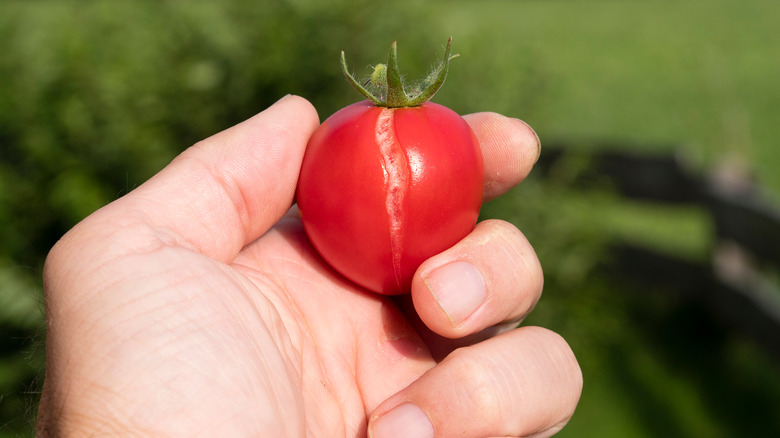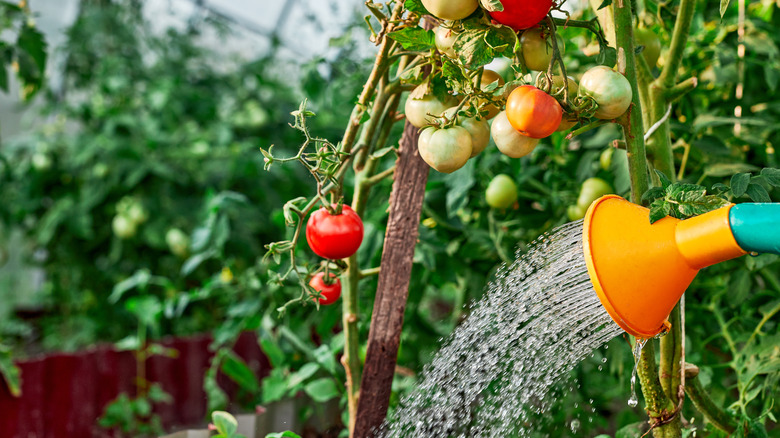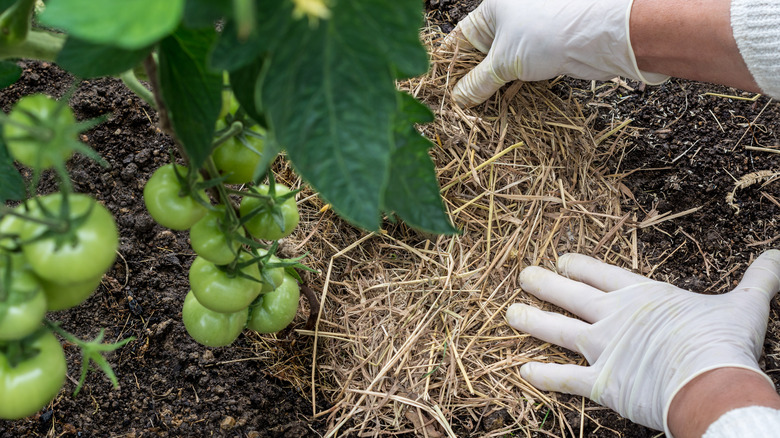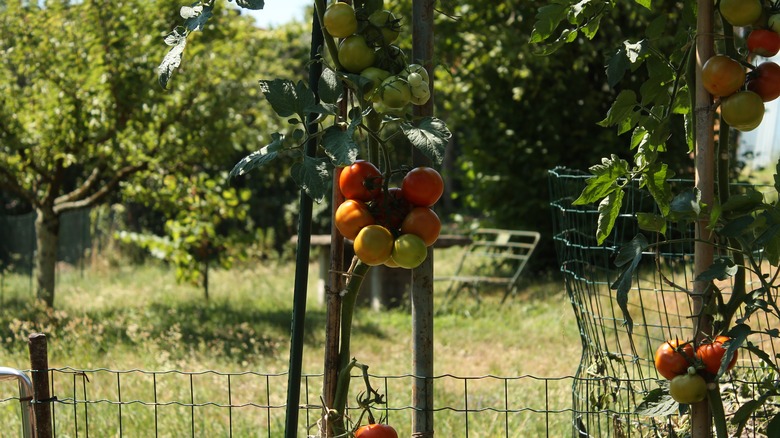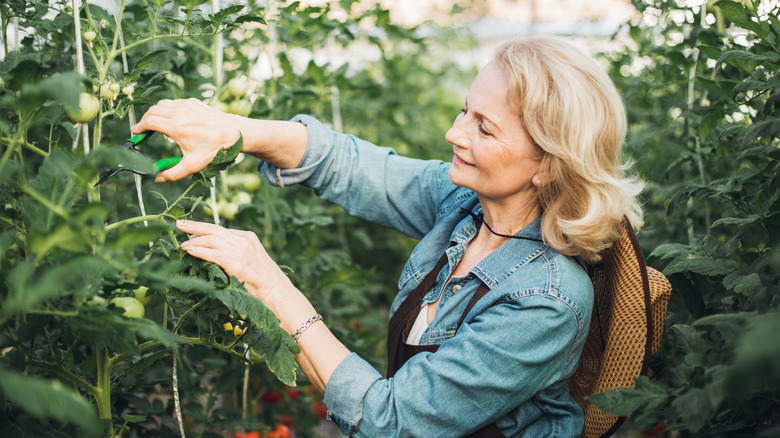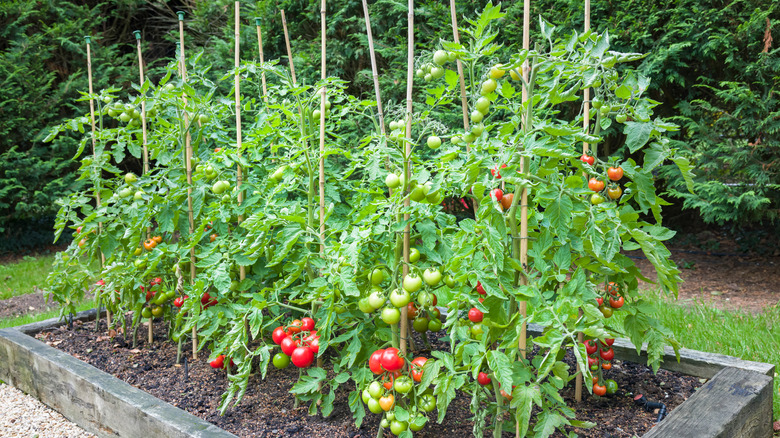Prevent Cracking And Splitting Tomatoes With 5 Easy Methods
One of the most common challenges gardeners face while growing tomatoes is the issue of cracking and splitting. When a tomato's skin ruptures, it not only diminishes the fruit's visual appeal but also affects its taste, texture, and overall quality. Not only do these blemishes affect the appearance of the tomatoes, but they also compromise their quality and shelf life. Cracked and split tomatoes are more prone to rot, fungal infections, and pests, rendering them unsuitable for consumption or long-term storage. Delving into the factors contributing to this issue is necessary to prevent cracking and splitting.
Tomatoes can crack and split due to genetic factors, environmental conditions, and cultivation practices. Excessive moisture fluctuations, such as irregular watering or heavy rainfall after a dry period, can lead to the rapid expansion of the fruit, causing the skin to crack. Additionally, uneven ripening and irregular growth patterns may make the skin less elastic and more prone to splitting. Understanding these factors will enable you to implement effective preventive measures and maintain the structural integrity of your tomatoes.
Water consistently
To ensure healthy fruit development and reduce plant stress, it's crucial to maintain consistent moisture levels in the soil. Appropriate watering enables the roots to absorb water and nutrients effectively, promoting the plants' overall well-being and development. This helps maintain the elasticity of the tomato skin and reduces the risk of cracking and splitting.
Proper watering techniques are essential for maintaining consistent moisture levels. For instance, overwatering can lead to excessively soft and swollen tomatoes, making them more prone to cracking. On the other hand, underwatering causes the fruits to become dry and more susceptible to stress-induced cracking. One effective technique is to water deeply but infrequently. Instead of giving your tomatoes shallow, frequent waterings, provide a thorough soaking once or twice a week. This allows the water to penetrate deep into the soil, encouraging the roots to grow deeper in search of moisture. Deep watering promotes robust root systems and helps the plants withstand dry periods without undue stress.
Add mulch
By applying a layer of organic mulch around the base of tomato plants, you can create a favorable environment that helps regulate soil moisture, temperature, and weed growth, reducing the risk of fruit damage. The mulch acts as a barrier between the earth and the atmosphere, reducing water evaporation and maintaining a more consistent soil moisture level. This is particularly crucial during fluctuating weather conditions, such as hot and dry spells followed by heavy rainfall.
Mulch also acts as an insulating layer, moderating soil temperature. In hot climates, it helps to keep the ground cooler, preventing the overheating of tomatoes, which can lead to fruit cracking. On the other hand, using mulch can aid in preserving warmth in colder areas, resulting in a consistent optimal temperature that promotes growth. Additionally, mulching suppresses weed growth by blocking the sunlight. Adding 2 inches of mulch can help prevent weeds from competing with tomatoes for water, nutrients, and space.
Provide shade
While tomatoes require sunlight for photosynthesis and fruit development, excessive heat and intense sunlight can cause the fruit to expand rapidly, putting strain on the skin and increasing the likelihood of cracking. One effective shading method is placing shade cloth over tomato plants to filter the sunlight and reduce its intensity. It allows for some sunlight penetration while minimizing the risk of excessive heat stress on the plants. The shade cloth should be secured above the plants, allowing air circulation and preventing it from directly touching the foliage.
Strategic positioning of tomato plants can also provide natural shade and protection. Placing taller plants or structures, such as trellises or fences, on the sun-facing side of the tomatoes can create partial shade during the hottest parts of the day. Tomatoes planted where they receive morning sun and afternoon shade benefit from the essential sunlight for photosynthesis early in the day while being shielded from the harsh, direct sunlight during the hottest hours.
Prune carefully
A tomato plant with dense foliage creates a microclimate that traps moisture around the fruits. This can lead to rapid expansion and increased pressure on the skin, resulting in cracking. Pruning helps allow for better air circulation and faster drying of the foliage after rain or irrigation. Improved airflow reduces the humidity around the fruit and minimizes the risk of cracking.
Pruning also diverts the plant's energy toward fruit production. By removing unnecessary foliage and suckers — the tiny shoots that develop in the leaf axils — the plant can focus its resources on developing and ripening the existing fruit. This can result in healthier, more robust tomatoes with a reduced risk of splitting. Start by removing any yellowing or diseased leaves. Next, selectively remove suckers that emerge from the leaf axils, aiming to maintain one or two main stems. Removing lower leaves that touch the ground can further improve airflow and reduce disease risk.
Offer support
As tomatoes grow, their vines become laden with heavy clusters of fruit, which can stress the branches and increase the risk of damage. Proper support systems help distribute the weight of the fruit evenly, reducing the strain on the branches and preventing them from bending or breaking. For example, cages are a popular choice for supporting tomatoes. The sturdy wire structures encircle the plants and provide support as they grow taller, keeping the branches upright and preventing the fruit from touching the soil, which can lead to increased moisture absorption and subsequent cracking.
Stakes are another commonly used method for keeping plants upright and providing stability. Staking also makes it easier to access the fruit for harvesting and promotes better airflow around the plant, reducing the risk of disease. Trellises are beneficial for tomatoes that have vigorous and sprawling growth habits. The tomato vines are trained to grow upwards and are secured to the trellis structure.
